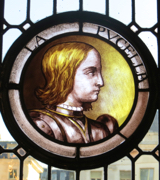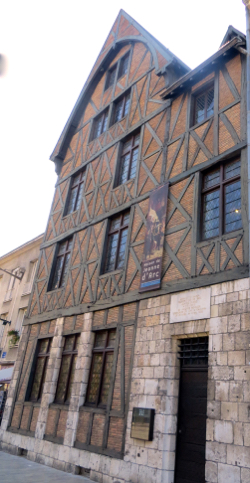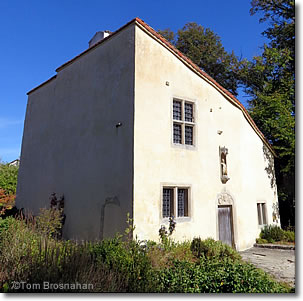 |
Jeanne d'Arc (Joan of Arc) in Orléans | |
| Joan of Arc is well known throughout France, but perhaps nowhere more so than in Orléans. | ||
|
|
|
Traveling in France, and particularly in the Loire Valley, you are going to come across many references to Jeanne d'Arc, or Joan of Arc. Most towns in the region will have a statue of Joan of Arc, often on horseback, and some will have museums or homes where she stayed. Hearing VoicesJehanne (Joan) was not born in Orléans, but in Domrémy, a village in Lorraine some 320 kilometers (200 miles) east of Orléans (map). She started hearing voices at the age of 13, and the voices ordered her to free the kingdom of France from the English domination during the Hundred Years' War, and have the dauphin (crown prince) Charles crowned as King of France at Reims. And so she did. Joan Goes to WarFamous for liberating Orléans from the English, Joan was first received at the Château de Chinon by the Dauphin (crown prince) Charles when she came to pledge herself to him. In the tiny town of Cléry-Saint-André, just 17 kilometers (11 miles) from Orléans, Joan also stopped to pray en route to Orléans. Following the success in Orléans, Joan accompanied Charles to Reims, the traditional coronation site for French kings, for his coronation as Charles VII in the Reims Cathedral. As the story has it, they traveled for days through English-occupied territory, taking towns and fortresses without spilling any blood. Trial for WitchcraftAfter the coronation, Joan's luck changed. She traveled to Paris, then to Compiègne, where she was captured on 23 May 1430 by the king's enemies. She was later taken to Rouen, Normandy, for an ecclesiastical trial on charges of witchcraft. Following the trial by a panel of priests in Rouen, Joan was condemned, delivered to the English and, at the age of 19, on 30 May 1431, burned at the stake, after which her ashes were thrown into the Seine. Joan RebornThe far-seeing eye of history did not lose sight of Joan of Arc. In 1456 a papal court re-examined the charges against Joan, absolved her, and declared her a martyr. Wanting a fitting figure of French military resolve, Napoléon Bonaparte made her a national symbol of France. In 1909 she was beatified, and in 1920 canonized: Saint Joan, La Pucelle, the Maid of Orléans, lives on in our lives today. Memorials in RouenToday there are many reminders of Joan of Arc in Rouen. The modern Église Jeanne d'Arc is located in the Place du Vieux Marché, or old marketplace, where she was burned. There is also a small Joan of Arc Museum and you can also visit the Tour Jeanne d'Arc, the tower where she was imprisoned, which now has a museum. More... The Maid of OrléansIn Orléans, it is all about celebrating Joan of Arc. Les Fêtes de Jeanne d'Arc, held every spring from late April until early May, commemorate the liberation of the city in 1429. Markets, sound and light shows, parades, concerts, and feasts are all dedicated to her, and Orléans parties like it's 1429. In 2012, Orléans threw a big birthday party to celebrate Joan's 600th birthday. Lots of candles.
|
|
Above, Joan of Arc on horseback, |




